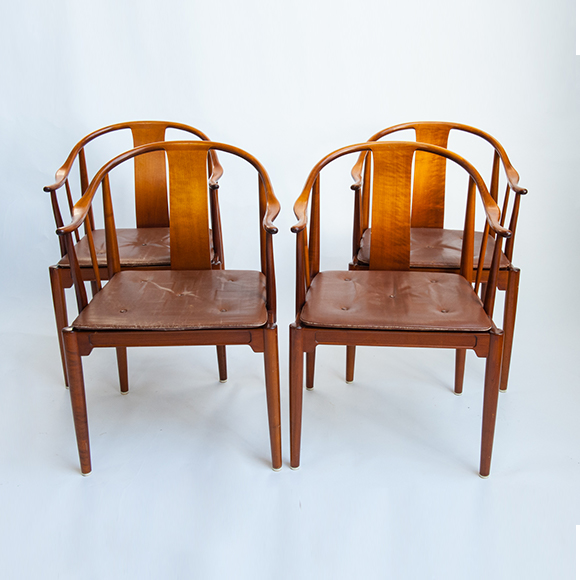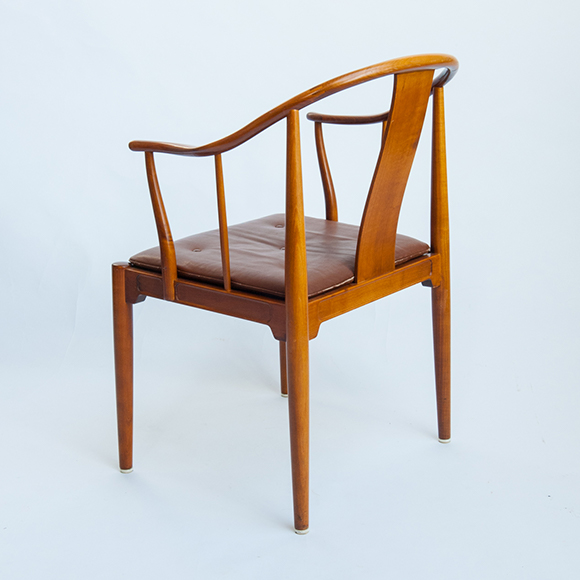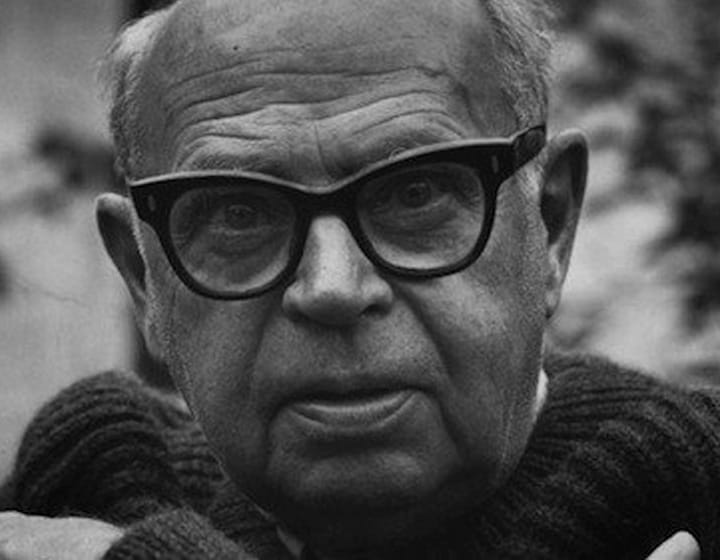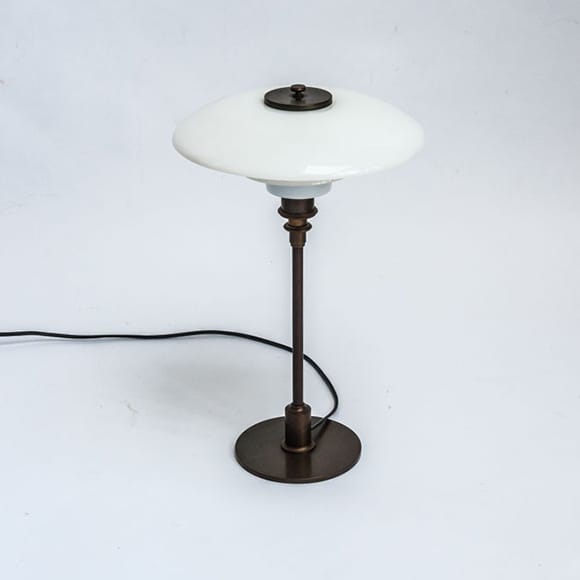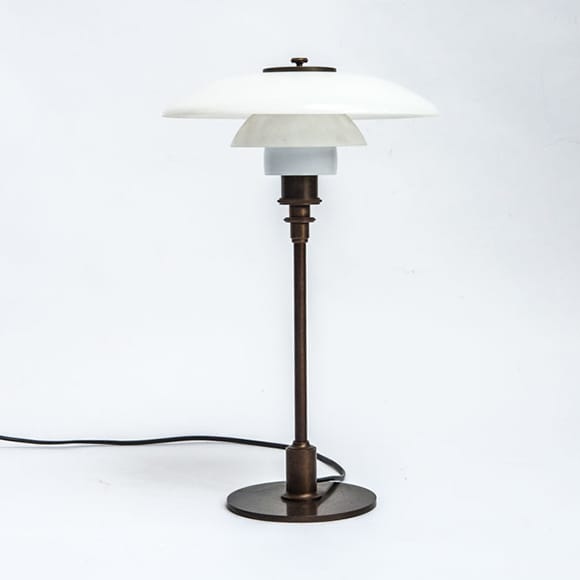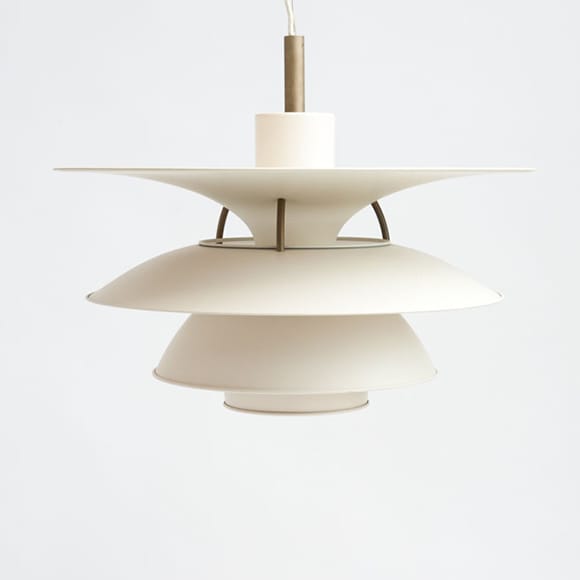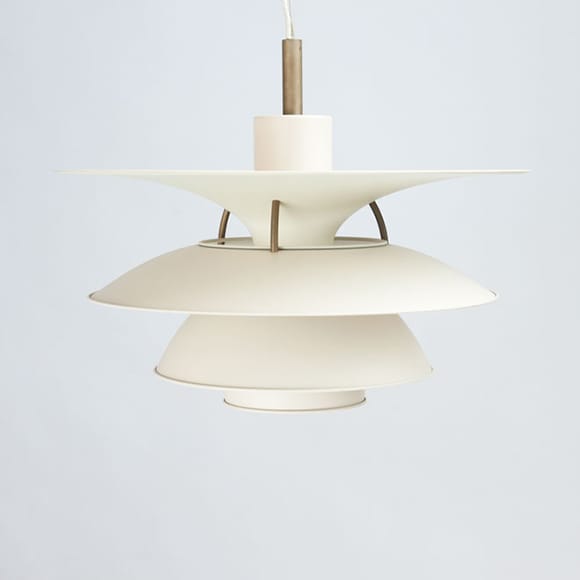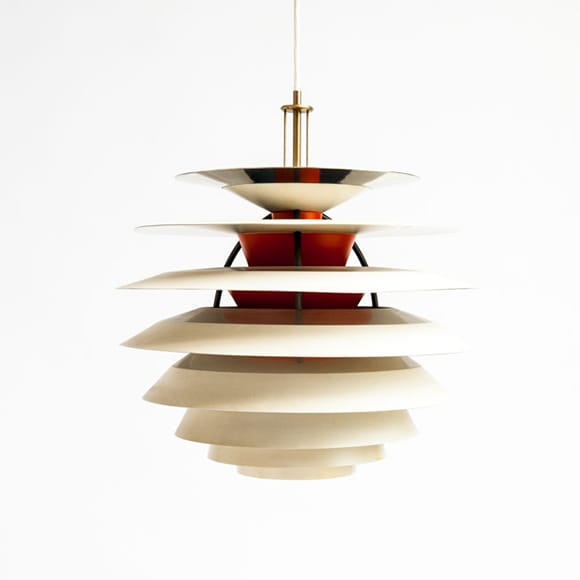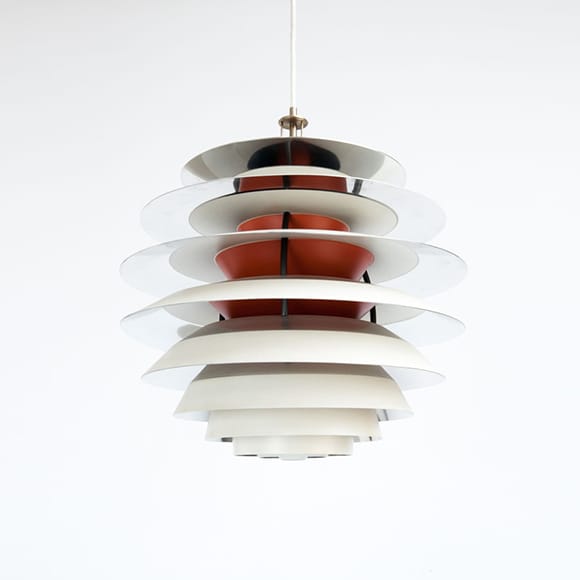In 1925, Henningsen began what would become a lifelong collaboration with Copenhagen-based lighting company Louis Poulsen, for whom he produced over one hundred lamps, all belonging to the PH series, and all based on the idea of multiple shades and diffusors to provide warm, soft light. The co-operation resulted in production of a complete lighting program that included the anti-dazzle PH-lamps that won him a gold medal at the World Expo in Paris in 1925. The principle of the original PH-lamp was later modified, resulting in the PH-5 lamp (1956) and the cone (1957).
Poul Henningsen’s designs are to be found in numerous official buildings from banks, museums, hotels and sport arenas to home interiors in Denmark and world wide.
Among his best known works are the 1958 PH Snowball, a pendant lamp with eight aluminum shades, and the 1957 PH Artichoke lamp, a pendant lamp with a bulb surrounded by scale-like reflectors—both iconic examples of Scandinavian modernist design. Henningsen's work can be found in major museum collections around the world, including MoMA, Vitra, and the V&A.

